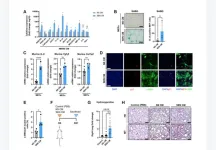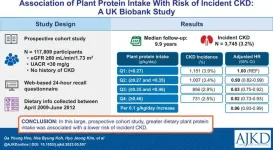Peer-reviewed
The Lancet: New study reveals global anemia cases remain persistently high among women and children. Anemia rates decline for
Sub-Saharan Africa and South Asia at highest risk
One-fourth of the global population is estimated to be anemic, with cases increasing rapidly for women, expectant mothers, young girls, and children younger than age 5.
In 2021, 1.92 billion people globally had anemia. This is an increase of 420 million cases over three decades.
Between 1990 and 2021, the study shows a global shift toward less severe anemia. The largest decreases were in adult males, with slower rates of progress among women of reproductive age and children younger than age 5.
Anemia is the third-leading cause of years with lived disability (YLDs) in the world.
Iron deficiency is the main cause of anemia, but there are limitations to focusing only on iron supplements and modifications to diet. This study underscores how treating underlying causes of anemia (e.g., malaria, chronic kidney disease, tropical diseases) is a critical first step.
In 2021, sub-Saharan Africa and South Asia had the most cases.
SEATTLE, Wash. July 31, 2023 – Anemia affected nearly 2 billion people in 2021, impacting women to a greater degree than men. In a new study covering three decades of global anemia data (1990–2021), a complex picture emerges of how several key factors play into the divergence in success stories among men, women, and children. Published today in The Lancet Haematology, the study was conducted by the Institute for Health Metrics and Evaluation (IHME), based in Seattle, and its Global Burden of Disease anemia collaborators.
“From this 30-year study, we know the global picture around anemia has improved, but there are still wide disparities when you narrow the focus on geography, gender, and age,” says Dr. Nick Kassebaum, senior author of the study, head of IHME’s Neonatal and Child Health team, and Professor in Anesthesiology at the University of Washington. “We modeled 37 underlying causes for anemia. It’s very important for clinicians to treat these causes in parallel to the anemia itself. We hope they use these data to design more comprehensive intervention and treatment plans, especially for the most vulnerable—women of reproductive age, children, and the elderly.”
Globally, in 2021, 31.2% of women had anemia compared with 17.5% of men. The gender difference was more pronounced during the reproductive years, ages 15–49. In this age group, anemia prevalence in women was 33.7% versus 11.3% in men.
“Over the years, there’s been a lot of focus on reducing anemia globally, but as a group, women and children have shown the least progress,” says Will Gardner, researcher at IHME and lead author of the paper. “This is a nuanced situation that revolves around access to nutrition, socioeconomic status, unmet need for contraception, and the ability to identify and treat underlying causes of anemia. Our data show how one group—adult men—has fared much better than two other groups, women (ages 15–49) and children younger than 5 years. This speaks to the need for a shift to multisectoral approaches and improved cultural awareness to make sure women and children are not left behind.”
Causes of anemia and impact
The leading cause of anemia in 2021 was dietary iron deficiency, constituting 66.2% of total anemia cases, with 825 million women and 444 million men affected globally. Inadequate intake of iron may have been the single most common cause of anemia, but many other conditions are major drivers of anemia.
The study found that gynecological disorders and maternal hemorrhage were important contributors to anemia burden among women of reproductive age. For children younger than 5 years, the main cause of anemia was dietary iron deficiency, but hemoglobinopathies, other infectious diseases, HIV/AIDS, and malaria were also important contributors in geographic locations where these diseases are prevalent.
“Anemia plays out differently depending on the group that’s struggling with the condition. For children, anemia can impact brain development and cognition, so early treatment and management are crucial. This might mean accessing high-quality, nutrient-rich foods and/or receiving treatment for parasitic infections and malaria,” says Dr. Theresa McHugh, scientific writer at IHME who focuses on neonatal and child health. “For many young women and girls, there’s an education gap about blood loss during menstruation, inadequate options for effectively managing menstrual problems in those who have them, and not enough knowledge about how to manage and/or reverse anemia when it occurs. We know anemia can impact mental health because the associated weakness and fatigue can interfere with desired activities.”
Previous studies have shown that anemia is associated with increased rates of anxiety and depression and higher rates of preterm labor, postpartum hemorrhage, low birthweight, short gestation, stillbirth, and infections for both child and mother.
Regions and risk
The research shows sub-Saharan Africa and South Asia are currently facing the greatest burden. In 2021, Western sub-Saharan Africa (47.4%), South Asia (35.7%), and Central sub-Saharan Africa (35.7%) had the highest anemia prevalence. The regions with the lowest anemia are Australasia (5.7%), Western Europe (6%), and North America (6.8%).
Countries with highest anemia:
Mali, Zambia, Togo (each had >50% anemia burden)
Countries with lowest anemia:
Iceland, Norway, Monaco (each had <5% anemia burden)
Regional variation in disease distribution was also reflected in cause-specific anemia burden. For example, HIV/AIDS was the second largest contributor to anemia YLDs in Southern sub-Saharan Africa. Anemia due to malaria was most prominent in the Central, Eastern, and Western sub-Saharan Africa regions.
Embargo: 23.30 [UK time] / 6.30pm [ET] Monday, July 31, 2023
For interviews with research authors, please email the IHME media team at media@healthdata.org
For embargoed access to the Article and Comment, please click here.
For embargoed access to the Appendix, please click here.
NOTE: IF YOU WISH TO PROVIDE A LINK FOR YOUR READERS, PLEASE USE THE FOLLOWING WHICH WILL GO LIVE AT THE TIME THE EMBARGO LIFTS: https://www.thelancet.com/journals/lanhae/article/PIIS2352-3026(23)00160-6/fulltext
About the Institute for Health Metrics and Evaluation
The Institute for Health Metrics and Evaluation (IHME) is an independent global health research organization at the University of Washington that provides rigorous and comparable measurement of the world’s most important health problems and evaluates the strategies used to address them. IHME is committed to transparency and makes this information widely available so that policymakers have the evidence they need to make informed decisions on allocating resources to improve population health.
For more information, please visit healthdata.org.
About the Global Burden of Disease Collaborator Network
IHME engages a large network of individual collaborators with specialties in various topic areas of expertise to conduct the Global Burden of Disease and its affiliated research projects. The GBD is a systematic, scientific effort to quantify the comparative magnitude of health loss due to diseases, injuries, and risk factors by age, sex, and geographies for specific points in time. It is the largest, most comprehensive effort to date to measure epidemiological levels and trends worldwide.
END




